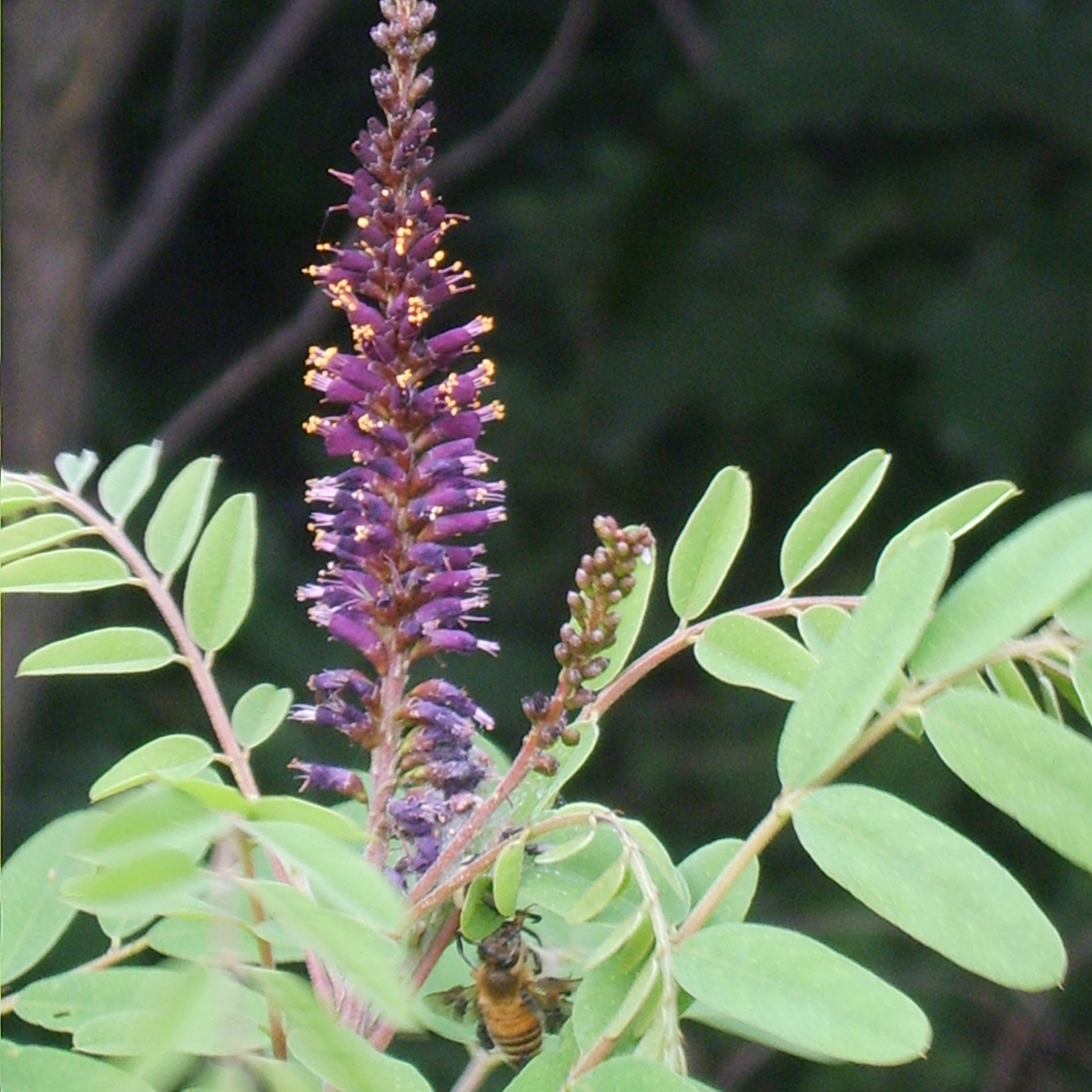| Weight | N/A |
|---|---|
| Dimensions | N/A |
| Botanical Name | Amorpha fructicosa |
| Zone | 3-9 |
| Soil | Prefers well drained most soils, can tolerate most soil types with adequate moisture and drainage. Typically grows along streams and bodies of water. |
| Light | Full sun to partial shade, in dryer soils partial shade is preferable. |
| Form | Upright deciduous perennial leguminous bush grows in airy loosely held branches of alternate pinnately compound leaflets topped with racemes of small purple-blue flowers. Often grows into dense thickets along streams and woodlands. Can appear leggy as the majority of the leaflets are in the top third of the bush with long stems below. |
| Height | 6-12 feet |
| Spread | 6-10 feet |
| Spacing | 6-10 feet with spaces or 4-6 feet for hedgerows |
| Bloom | Flowers are at the tops of branches in spikes of deep purple and violet, with orange stamens, distinctly not pea like in shape, blooms from April – June. |
| Pollinator Friendly | Yes, especially andronid bees and other native bees and butterflies (see Special Notes) |
| Special Notes | Native wild plant with nectar important to butterflies and bees (attracts butterflies, is a larval host to California & Southern dogfaces, silver-spotted skipper, gray hairstreak, and hoary edge skipper (from the Pollinator Program at The Xerces Society for Invertebrate Conservation). |
False Indigo
$10.00
False Indigo – 2 year rooted cutting bare root plants.
False Indigo is a wild perennial native of Southeastern prairies of the U.S. A long lived hardy bush with multiple straight upright spikes of dense pea-like purple flowers. The spikes can be up to 4 feet in height. Plants generally grow in these spiky clumps up to 3 or 4 feet across with strong spreading root systems that can be divided in early spring.
Early growth habit is to develop a strong root system with more and more flower spikes from the root base each year. Cut the spikes back to the ground at the end of the fall or in winter to encourage new and stronger growth in spring.
This member of the pea family is a nitrogen fixer and long time medicinal eyewash and as a purgative, to treat tooth aches and nausea by Native Americans.
False indigo makes an excellent pollinator or native garden plant, meadow planting or showy cottage garden specimen. Due to its spreading upright spikey stems, it should be given ample room to spread. It is a host plant for the Frosted Elfin, Wild Indigo Duskywing, and Hoary Edge butterflies and source for several species of native North American bees. Plant it in native gardens to encourage local pollinators.
Named for its use as a replacement to true indigo (Indigofera tinctoria, native to southern Asia). Other names include blue wild indigo, indigo weed, rattleweed, rattlebush and horse fly weed.
USDA Hardiness Zones 3-9. Drought Tolerant, Full Sun. Tolerates poor soil, prefers slightly acidic, well drained soils.
Keep new plants well watered when first established through their first growing season.
While native throughout most of the lower 48 states and throughout Canada and Mexico, it is not Native in New England or the Pacific Northwest. Prohibited in CT and ME, considered invasive in WA.


Reviews
There are no reviews yet.